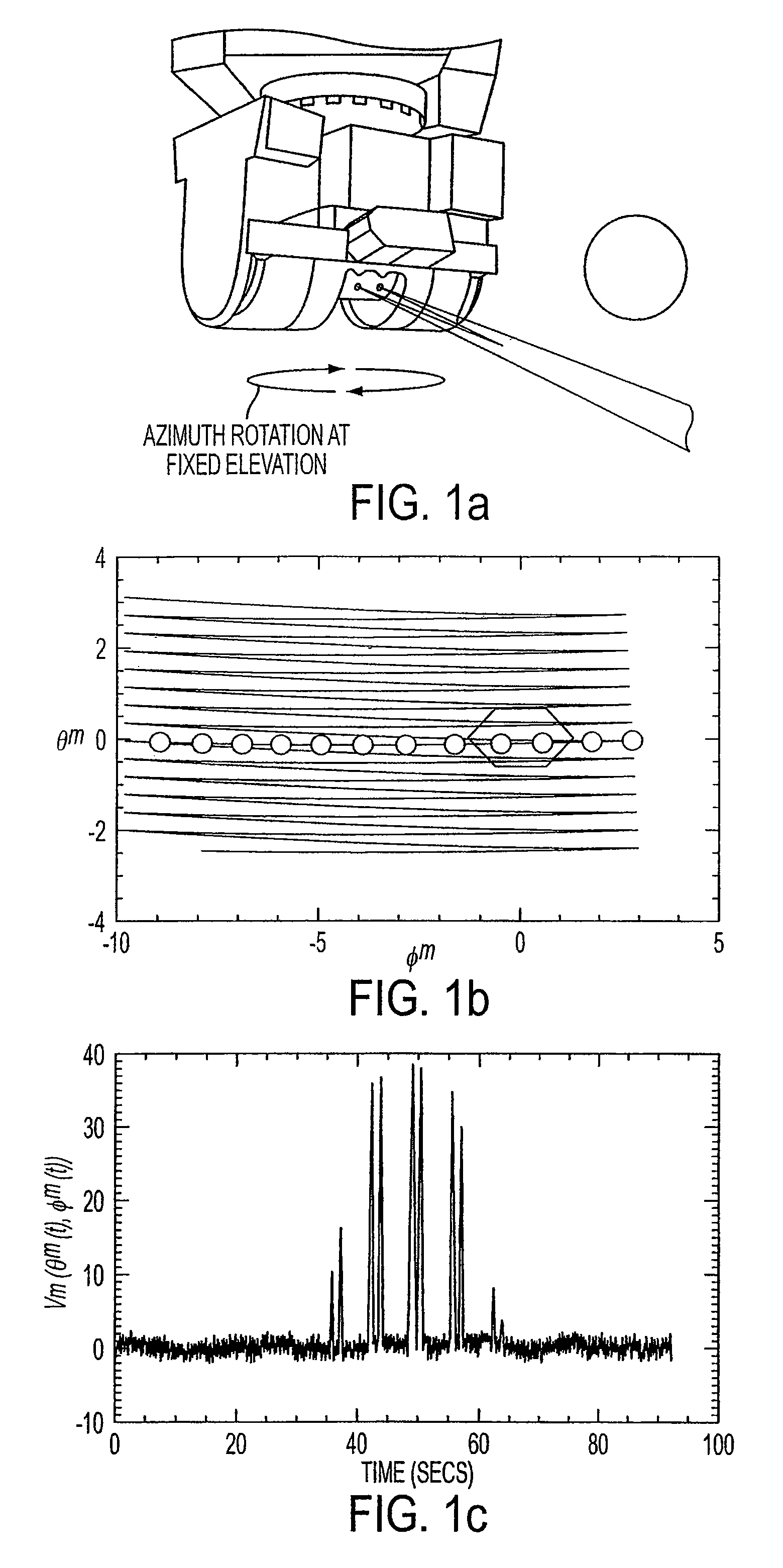Method of calibrating earth, lunar and solar spectrometers
a spectrometer and lunar ray technology, applied in the field of radiometry, can solve the problems of low accuracy, low accuracy, and the spectral characteristics of a diffusive reflector or diffuser panel, and achieve the effect of improving the accuracy of measured albedo ray of the earth, low accuracy, and low accuracy
- Summary
- Abstract
- Description
- Claims
- Application Information
AI Technical Summary
Benefits of technology
Problems solved by technology
Method used
Image
Examples
Embodiment Construction
[0056]In U.S. patent application Ser. No. 12 / 542,885, filed by the inventor of the present application, a description of the Clouds and the Earth's Radiant Energy System (CERES) is provided. As described therein, CERES is a satellite which includes instruments (radiometers) for monitoring global Earth radiation budget (ERB) parameters from space. The CERES radiometers also view the moon. The CERES field-of-view (FOV), however, is approximately ten times larger than the extent of the lunar disk seen from a low earth orbit. In addition, each CERES detector in the radiometers has a non-uniform spatial response within its FOV. This complicates attempts to measure absolute lunar radiance directly, as is done for the ERB parameters.
[0057]When the CERES telescope is oriented to view the moon, the lunar radiance fills only 10% of the PSF. Such extreme under-filling of the CERES FOV and lack of an accurate known point spread function (PSF) shape, P(θ,φ), adds complications to any attempt to ...
PUM
 Login to View More
Login to View More Abstract
Description
Claims
Application Information
 Login to View More
Login to View More - R&D
- Intellectual Property
- Life Sciences
- Materials
- Tech Scout
- Unparalleled Data Quality
- Higher Quality Content
- 60% Fewer Hallucinations
Browse by: Latest US Patents, China's latest patents, Technical Efficacy Thesaurus, Application Domain, Technology Topic, Popular Technical Reports.
© 2025 PatSnap. All rights reserved.Legal|Privacy policy|Modern Slavery Act Transparency Statement|Sitemap|About US| Contact US: help@patsnap.com



